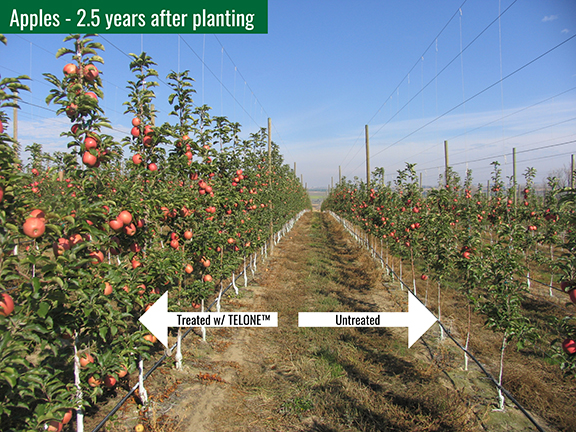The Time For Climate Change Denial Is Over [Opinion]
Climate change is something we’ve covered often in the pages of this magazine. It’s a sensitive subject in agriculture — with many growers believing it’s more fiction than science.
This has always come as a bit of a surprise to me. If anyone is well aware of the changing climate we are living in, it’s those who work directly with the elements themselves.
These past few years we’ve been on a roller coaster of extremes. Whether it’s punishing cold in the Northeast or Midwest which decimates peach crops, or an unseasonable drought, catastrophic flooding from rainstorms, earlier bloom dates, cold snaps, and earlier and earlier harvest dates, it’s hard not to miss the changes.
As I’m writing this, 98% of the state of Massachusetts is in a drought. This, of course, follows the bone-chilling
Feb. 14 “Valentine’s Day Massacre,” which virtually eliminated the peach crop in the Northeast. Nearly 10% of New York is in an extreme drought. While the average number of growing degree days in the Finger Lakes is 588, this year’s total was 742, the highest on record, according to Hans Walter-Peterson of Cornell University Cooperative Extension.
NASA reported this past August was the hottest on Earth in 136 years — as long as worldwide temperatures have been recorded. It was the 11th straight month of record-setting worldwide temperatures.
I recently posted a story on GrowingProduce.com which talks about a Cornell study predicting earlier springs, like 2012, will become more frequent in the next 30 years if emissions and greenhouse gases — which increase global warming — are not curbed.
Climate change is often confused with global warming. Although they’re related, it’s important to understand global warming is the increase in temperature near the Earth’s surface, whereas climate change refers to the long-term climate models — air temperature, precipitation, and weather patterns.
NASA researchers say 2/3 of the spike in global temperatures has occurred since 1975, rising about 0.20°C per decade. Mounting temperatures do directly influence long-term climate patterns. Researchers say although a degree seems like an insignificant figure, a 1- or 2-degree drop in temperature sent the Earth into the Little Ice Age and a 5-degree drop was enough to bury North America in ice 20,000 years ago.
You and I have sat in on many a presentation by experts at land-grant universities who say the new normal — thanks to climate change — will be these extremes of high temperatures, cold temperatures, drought, and flooding. In other words, it’s time to expect more volatility in your growing seasons and start to look at what choices you will make in the next cycle of orchard and vineyard renewal.
The time for climate change denial is over. It’s time to prepare your orchards and vineyards for a future of extreme heat, cold, droughts, floods — the gamut of weather patterns thanks to climate change. It’s also time to acknowledge that much of this climate volatility is our fault, which means we can take steps to curb further damage, together.
I think Barry Bedwell, a member of our Editorial Advisory Board, said it best in our July 2015 cover story, “Climate change should bring more people together for the common good and result in real progress rather than just political debate and rhetoric.”










